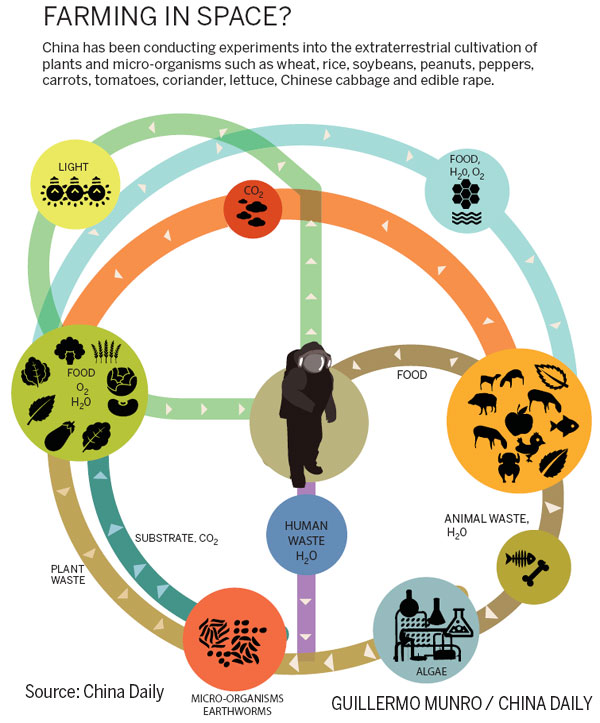Growing food in space could assist in human colonization
By Zhang Lei (China Daily) Updated: 2014-01-06 07:53Simulation vs reality
Despite the success of the experiments at Yuegong-1, the simulated environment is not the real thing, of course. Liu Hong was reluctant to say the tests were conducted in an exact replica of the lunar environment because it's so difficult to produce the high levels of radioactivity found on the moon, along with its low gravity.
Liu told Southern Metropolis that the experiments were extremely difficult to conduct; the plants had to undergo wide fluctuations in temperature, from -175 C to 120 C, and although the tests were conducted in a simulated environment, there's always the possibility of unknown variations in space.
New Scientist reported that next year NASA intends to send canisters to the moon containing oxygen, which will be used to germinate seeds embedded in nutrient-infused filter paper.
Despite the success of the Yuegong-1 project, Professor Liu Huajie of Peking University who participated in the Biosphere 2 project - a 1.27-hectare, enclosed artificial ecosystem in Oracle, Arizona - was not optimistic about the prospects for exo-cultivation.
"Judging from my experiences with Biosphere 2 and also from an evolutionary perspective, the likelihood of real success on the moon is small. The motivation behind the experiment is understandable, but it underestimates the unique nature of Earth as Gaia - the mother of life - which is irreplaceable. Humans should abandon their fantasies about space migration and take better care of Earth."
Contact the writer at zhanglei@chinadaily.com.cn

- More female officials caught in corruption
- Whampoa veterans recorded with glory
- Police bust 9 terrorist groups in Xinjiang
- Knife-wielding attackers seized in Xinjiang
- New regulation leads to drop in petitioned cases
- Hunan plant shut as probe into lead poisoning begins
- Police boost efforts to combat gambling
- Project offers jobs openings to legal experts
- Experts: Dog meat festival 'illegal'
- Nation looks to upgrade
pipeline networks






